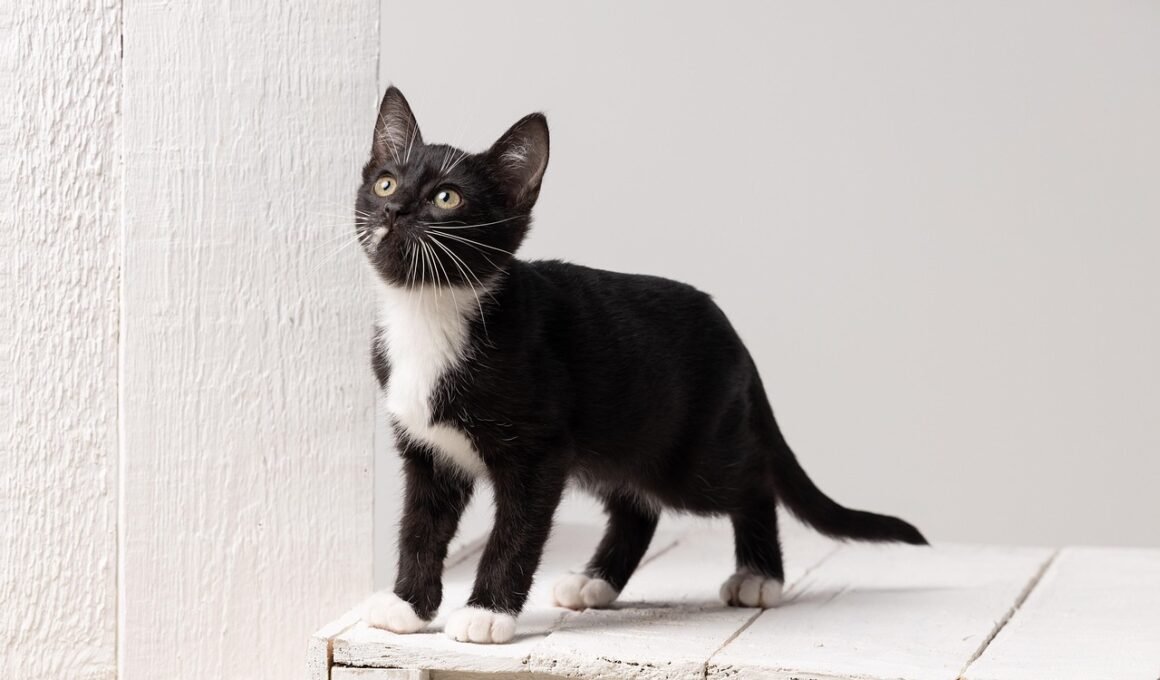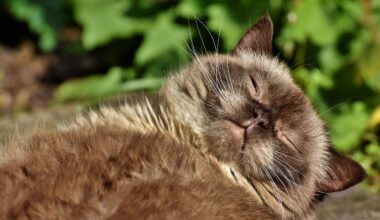Collaborating with Rescue Staff to Improve Photo Outcomes
Cat photography serves a vital role for rescue organizations aiming to find loving homes for their feline friends. High-quality images can significantly increase the chances of adoption by showcasing the cats’ personalities. Collaboration between photographers and rescue staff is essential to ensure that the cats are presented in the best possible light, both literally and figuratively. Rescue staff can provide vital insights into each cat’s temperament, which aids in capturing authentic moments. Also, understanding the environment where the cats feel most comfortable is crucial. Photographers should consider the background and setting of each shot, using uncluttered, natural spaces to make the cats stand out. Lighting plays a pivotal role, and working with rescue staff can help identify the best times and places to shoot. Ensuring that the environment minimizes distractions will also dramatically improve photo quality. The photographer’s skill set combined with the rescue team’s knowledge of their animals forms a collaborative synergy that enhances photo outcomes. This partnership ultimately leads to more attractive adoption profiles, increasing the chances of the cats finding forever homes.
Cats possess distinct behaviors that make them unique subjects for photography. Each cat has its own sense of curiosity, playfulness, and even shyness, which should be leveraged during the photo session. It’s beneficial for photographers to spend time with the cats before shooting. This helps both parties become accustomed to each other, fostering a comfortable environment that reflects in the photos. One effective strategy is to engage the cat’s interest with toys to prompt natural interactions. Rescue staff can assist in selecting the right toys, emphasizing those that resonate with the specific cat’s play style and personality. Additionally, using treats as an incentive can encourage the cats to pose or act in ways that highlight their charms. The goal is to tap into a cat’s innate characteristics and capture those moments on camera. Utilizing various angles can also add context and depth to the images; shooting at the cat’s eye level often creates a more engaging visual. Lastly, post-session reviews between photographers and staff can reflect on what worked well and areas for improvement, ensuring future collaborations are even more fruitful.
Understanding the Rescue Environment
Capturing great images of cats in rescue situations often means understanding the environment they are in. Many cats come from challenging backgrounds, so their experiences may affect how comfortably they interact with people or cameras. Photographers must approach each session with sensitivity and respect for the animals’ emotional states. Utilizing knowledge from rescue staff about individual cats will enable the photographer to tailor the experience to each cat’s needs. Creating a calm atmosphere in the rescue facility can yield better results, reducing the likelihood of stress-induced behavior during shooting. Lighting should be warm and inviting, eliminating harsh shadows and emphasizing the cat’s natural beauty. When possible, outdoor sessions can provide natural light and enrich the overall quality of the photos. Photographers can also encourage staff to beautify the occasional background with such elements as plants or textiles to elevate visual appeal. Ultimately, grasping the specific dynamics within the rescue space can not only improve image quality but also leave a lasting positive impact on the cats’ overall experience.
Forming strong relationships with rescue staff can bring numerous benefits to photographers. Communication is crucial in understanding the priorities and goals of the rescue organization, allowing both parties to align on objectives. Regular meetings or check-ins can help in adjusting strategies based on feedback and evolving situations. Photographers should actively seek out opinions from staff members regarding which images resonate most with the adopting community. This input can immensely shape future shoots leading to improved visual storytelling. Additionally, photographers should contribute to the rescue process beyond just taking pictures. Involvement might include sharing knowledge about online marketing strategies, assisting with managing social media accounts, or creating promotional materials featuring the stunning images captured. Such contributions reinforce collaborative efforts and further support the mission of finding loving homes for the cats. Establishing a network of aligned goals helps not only the photographers and staff, but it ultimately embodies the mission of the rescue organization itself, turning every effective photograph into a unique opportunity for every cat.
Creating Compelling Stories Through Photography
Effective cat photography extends beyond merely snapping aesthetically pleasing pictures; it involves telling a story that evokes emotions. Visual storytelling can be extraordinarily powerful, as it draws prospective pet owners into the lives of the cats. Each photo should highlight unique characteristics and offer glimpses into each cat’s personality. Capturing candid moments—such as playing with a toy or napping under a sunny window—can convey authenticity that structured poses may lack. Rescue staff can play a significant role by encouraging staff to reflect on each cat’s history or quirks that would be compelling to potential adopters. Crafting a backstory enhances the emotional connection made through the photograph. Leverage social media platforms to share these stories in conjunction with the images. This can help reach a broader audience actively seeking pets to adopt. Compelling narratives paired with captivating visuals significantly increase engagement and the likelihood of adoption. Furthermore, maintaining a consistent style in the photography will establish a recognizable brand identity for the rescue organization, attracting more followers and supporters.
The right equipment and techniques can notably influence the outcome of cat photography. Photographers should familiarize themselves with their camera settings and understand how to adjust for different lighting conditions commonly found in rescue environments. Utilizing the right lenses can bring a significant impact; for instance, a macro lens is perfect for capturing intricate details of a cat’s features. A longer lens can allow for candid shots from a distance, minimizing disturbances in the cat’s natural behavior. Investing in good lighting equipment can also prove beneficial, especially for indoor shoots. The versatility of different lighting setups can allow photographers to mimic natural conditions, delivering stunning results. Post-processing techniques should always be considered after the shoot, as editing can enhance images while remaining true to the animal’s nature. Providing the final images in various formats that are suitable for digital or print is an additional service that photographers can offer to the rescue organization, ensuring the maximum reach and visibility for the cats looking for homes.
Measuring Success through Adoption Rates
Ultimately, the success of cat photography projects can be tracked through the lens of adoption rates. With each successful adoption that can be linked to compelling imagery, the photographer’s contribution becomes evident and tangible. Collecting data on adoption statistics before and after shooting sessions can help evaluate the effectiveness of collaborative efforts. In addition, surveying adopters about the initial attraction to the cats can yield insightful feedback about what kinds of images resonate most. This information can provide invaluable guidance for future photography projects, solidifying the best practices that have been uncovered through experience. Partnerships can also benefit from sharing success stories through community outreach programs, helping to build credibility and trust with pet seekers. Every photograph has the potential to capture hearts and change lives, making it essential for rescue organizations to embrace the integration of skilled photography in their adoption efforts. Through consistent partnerships, the aim of finding homes for all cats can be achieved while simultaneously providing a fulfilling experience for both photographers and the staff involved.
Cat photography for rescue organizations involves much more than just taking pictures; it’s about creating a visual narrative filled with emotion and authenticity. Every image should be a window into the soul of each cat, showcasing their individuality and captivating the hearts of potential adopters. This authentic representation greatly influences adoption rates, as compelling visuals tug at emotional strings. The collaboration between photographers and rescue staff is increased awareness about the importance of quality images in promoting adoption campaigns. Engaging in conscious discussions about photography strategies can only enhance the final outcomes. Familiarizing oneself with the personalities of different breeds and backgrounds is equally important, as this can help capture specific traits that will resonate with potential pet owners. All efforts, from interactions prior to photo sessions to the final shot taken, play critical roles in how successfully each cat is represented. Successful outcomes promote a stronger bond between rescue staff and the photographers. In conclusion, effective communication and a shared vision can help turn ordinary rescue projects into extraordinary success stories, making a lasting impact not only in feline lives but also in the community as a whole.


